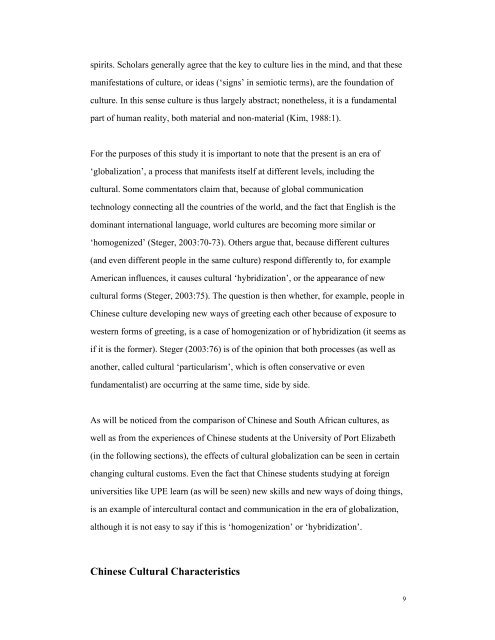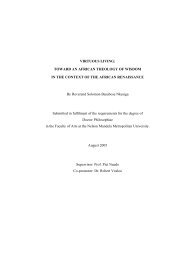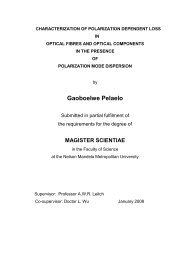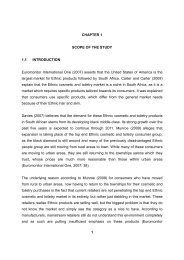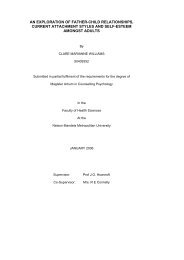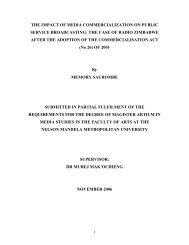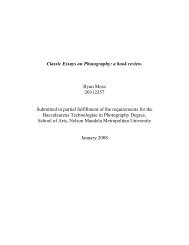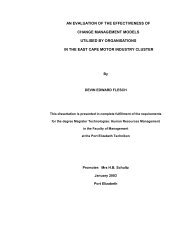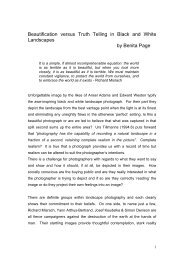CULTURE SHOCK - Nelson Mandela Metropolitan University
CULTURE SHOCK - Nelson Mandela Metropolitan University
CULTURE SHOCK - Nelson Mandela Metropolitan University
Create successful ePaper yourself
Turn your PDF publications into a flip-book with our unique Google optimized e-Paper software.
spirits. Scholars generally agree that the key to culture lies in the mind, and that thesemanifestations of culture, or ideas (‘signs’ in semiotic terms), are the foundation ofculture. In this sense culture is thus largely abstract; nonetheless, it is a fundamentalpart of human reality, both material and non-material (Kim, 1988:1).For the purposes of this study it is important to note that the present is an era of‘globalization’, a process that manifests itself at different levels, including thecultural. Some commentators claim that, because of global communicationtechnology connecting all the countries of the world, and the fact that English is thedominant international language, world cultures are becoming more similar or‘homogenized’ (Steger, 2003:70-73). Others argue that, because different cultures(and even different people in the same culture) respond differently to, for exampleAmerican influences, it causes cultural ‘hybridization’, or the appearance of newcultural forms (Steger, 2003:75). The question is then whether, for example, people inChinese culture developing new ways of greeting each other because of exposure towestern forms of greeting, is a case of homogenization or of hybridization (it seems asif it is the former). Steger (2003:76) is of the opinion that both processes (as well asanother, called cultural ‘particularism’, which is often conservative or evenfundamentalist) are occurring at the same time, side by side.As will be noticed from the comparison of Chinese and South African cultures, aswell as from the experiences of Chinese students at the <strong>University</strong> of Port Elizabeth(in the following sections), the effects of cultural globalization can be seen in certainchanging cultural customs. Even the fact that Chinese students studying at foreignuniversities like UPE learn (as will be seen) new skills and new ways of doing things,is an example of intercultural contact and communication in the era of globalization,although it is not easy to say if this is ‘homogenization’ or ‘hybridization’.Chinese Cultural Characteristics9


